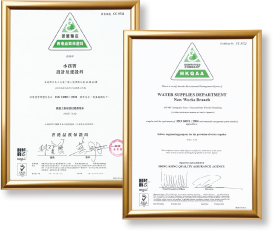- Main
- Vision, Values & Mission
- Corporate Profile
- WSD Organisation Chart
- Events in Brief
- Director’s Statement
- Key Performance Indicators
- Total Water Management Strategy
- Water Supply Management
- Water Demand Management
- Waterworks Infrastructure
- Finance and Water Charges
- Sustainable Operations
- Focusing on Customer Service
- Shaping Our Future
- Appendices and Annexes
- Download full report
(PDF 22MB)

The hydropower plant at Tuen Mun Water Treatment Works
History, experience and a precise understanding of what is required in terms of viable water supplies are key elements that enable us to operate in a sustainable manner.
The Department is committed to:
- working in strict compliance with environmental regulations
- optimising the use of energy and fuel consumption
- limiting gaseous emissions
- minimising the consumption of glossary items in offices
- minimising the use of chemicals in the water treatment process
- minimising water loss across the distribution system
- minimising environmental impacts that can arise from construction work
- reducing the quantities of solid, liquid and chemical wastes generated by our laboratories, workshops and treatment works
- minimising the discharge of effluent and where possible recycle effluent as reclaimed water
- reducing noise generated from pumping stations
- encouraging the setting up of green roofs
- encouraging the use of recycled paper
-
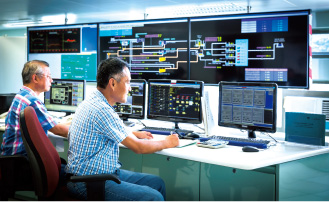
Staff monitoring operations of water treatment works through the control
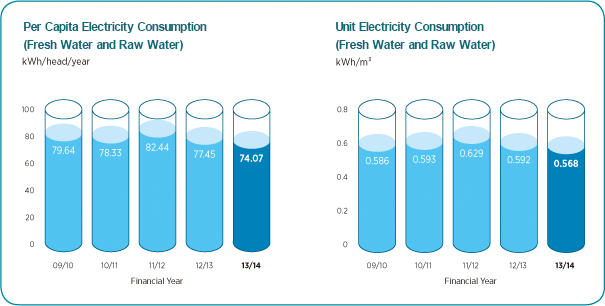
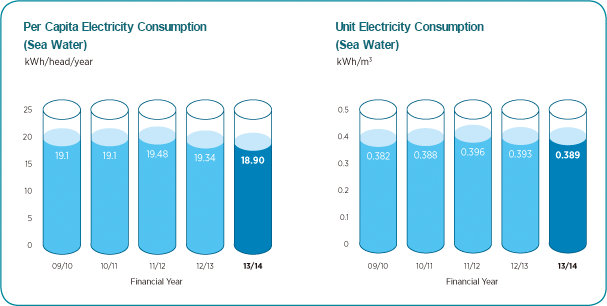
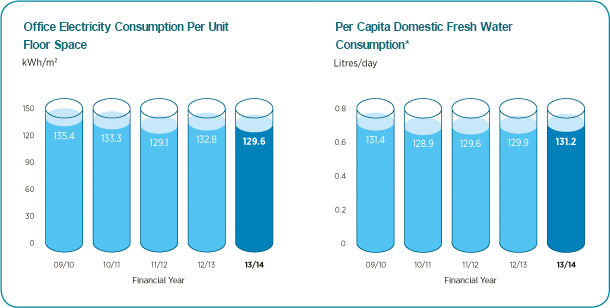
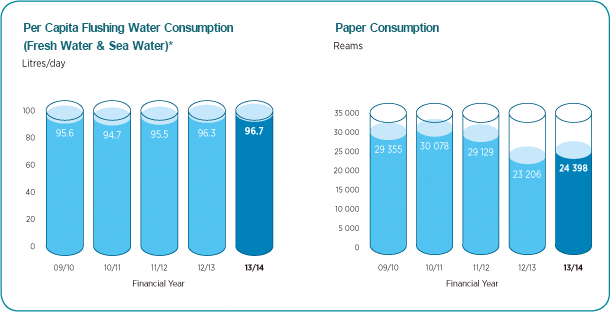
Environmental Focus
The vision of the Department is to excel each day at satisfying the needs of providing water services to our customers. As part of that commitment, we fully appreciate the responsibilities we have toward maintaining a clean environment. For this reason, the New Works Branch of the Department is tasked with planning, designing and building waterworks to ensure that all impacts to the environment will be minimised. Since early 2013, The New Works Branch has followed a strict protocol as part of the Environmental Management System (EMS) in accordance with ISO Standard 14001. The EMS mandate is: “Environmental management in the provision of water supply services arising from planned and new engineered projects, developments, products and services.”. In October of 2013, the New Works Branch obtained ISO140001: 2004 Environmental Management System Standards certification applicable to the delivery of engineering projects for the provision of water supplies.
The New Works Branch is committed to:
- continual improvement
- prevention of pollution
- acting in compliance with all applicable legislation and other requirements
New Technology and Equipment
Pump Scheduling with Genetic Algorithm
The Department is now studying the latest technologies that optimise the energy needed to operate pumps throughout an entire water supply and distribution system. Working in partnership with the Centre for Water Systems at the University of Exeter in the UK as well as the local engineering sector, we are continuing to refine the methodology of on-line pump controls at the Pak Kong Water Treatment Works.
Sustainable Development
Releasing a regional office to optimise land use for the public’s benefit
Since 1950 the Department’s New Territories West Regional Office at Sai Yee Street, Mong Kok has been in continual operation. This year we have decided to relocate the Office as part of the Area Improvement Plan (AIP) for the Shopping Area of Mong Kok (drafted by the Planning Department). After re-location the site will become usable for AIP to help improve traffic flow and the overall environment of Mong Kok’s commercial development. The re-provisioning of a building in Tin Shui Wai will serve as the new Regional Office with construction beginning in mid-2015 and a completion date near the end of 2017.
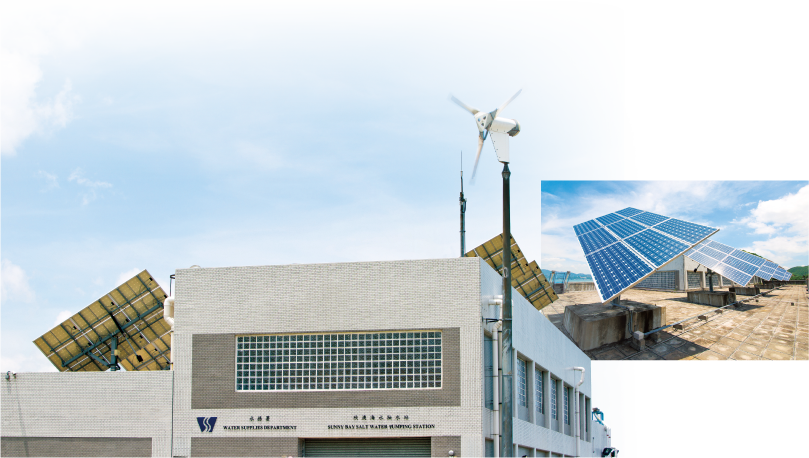
Caverning of Waterworks Installations
The 2013 policy address from the Chief Executive contained an initiative to develop rock caverns as viable sources of long-term land supply. We at the WSD will actively support this plan by carrying out feasibility studies of relocating the existing Diamond Hill Fresh Water and Salt Water Service Reservoirs and other associated facilities to caverns in order to release sites for housing or other uses to meet the long-term social and economic needs of the Territory. The feasibility study will also review and enhance water supply systems to maintain a reliable, adequate and high quality supply of water to the community.
Extending salt water supply system to save precious fresh water
The salt water supply system at Pok Fu Lam was completed in March 2013 and salt water delivery to Wah Fu Estate has been in effect since October 2013. The Department is currently initiating a trial outsourcing arrangement to explore the possibility of converting sea water supplies to part of the Pok Fu Lam area. The construction works for the salt water supply to northwest New Territories including Tuen Mun East, Yuen Long and Tin Shui Wai are in progress. Major components for this salt water supply system are expected to be completed in 2014. Moreover, a new salt water supply project at Tung Chung is currently in the planning stages.
-
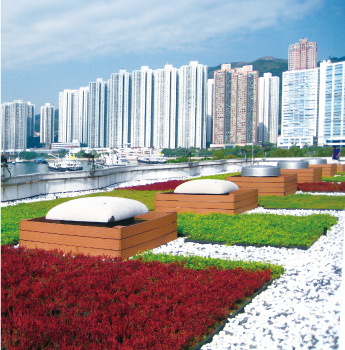
Green roof on a pumping station
Energy Use and Savings
The WSD has embarked on a host of ongoing energy management programme initiatives with the aim of reducing energy use over the entire range of operations for supplying water to customers. Among the most effective energy-saving measures have been the promotion of water conservation within the community along with timely maintenance and replacement of mechanical and electrical equipment. In addition, we regularly monitor plant operations and energy performance while carrying out energy auditing for major assets as well as maintaining green housekeeping of waters office and installations. All of these measures have had the cumulative effect of reducing overall energy consumption by an additional 3.0% during 2013/14.
Wave-powered Cleaning Device
Staff from the WSD have designed and developed an innovative wave-powered cleaning device that prevents marine organisms from growing on the intake screens of seafront salt water pumping stations, which results in significant manpower and energy savings. In recognition of this device’s environmentally friendly, simple and low-cost design, our staff won the Gold Prize and a Special Citation (Innovation) of the Team Award (Internal Service) category at the Civil Service Outstanding Service Award Scheme 2013.
ISO 50001 Energy Management
Over the years, we have made it our singular focus to embrace best practices for improvements in energy efficiency, and the results have allowed us to achieve remarkable savings in energy costs. In line with our commitment to environmental protection, we have developed a department-wide Energy Management System based on the ISO 50001:2001 standard and our goal is to earn certification before the end of 2014.
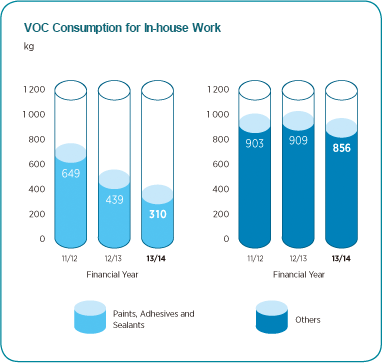
-
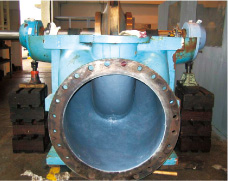
Internal coating improves pump efficiency
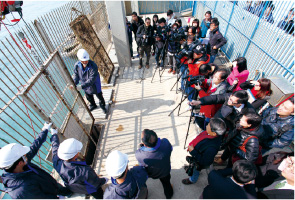
-
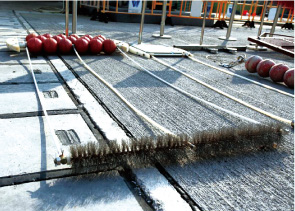
Press conference of wave-powered cleaning device at Tuen Mun Salt Water Pumping Station

| No of Government Vehicles in Operation | Total Fuel Consumption (Litres) | Total Mileage (km) | |||||||
|---|---|---|---|---|---|---|---|---|---|
| 11/12 | 12/13 | 13/14 | 11/12 | 12/13 | 13/14 | 11/12 | 12/13 | 13/14 | |
| Diesel | 18 | 18 | 16 | 30 619 | 28 121 | 22 569 | 209 738 | 138 193 | 116 082 |
| Petroleum | 196 | 201 | 190 | 461 144 | 533 795 | 534 972 | 3 255 439 | 3 538 662 | 2 732 005 |
| Hybrid (Petrol/Electric) | 21 | 20 | 18 | 53 834 | 15 897 | 15 265 | 376 407 | 260 951 | 246 496 |
| LPG | 8 | 8 | 13 | 36 171 | 36 167 | 35 187 | 115 208 | 109 775 | 107 640 |
| Electricity | 3 | 4 | 9 | - | - | - | 16 437 | 32 900 | 74 572 |
| (Figures in Tonnes) | CO2 | SO2 | NOx | RSP | ||||||||
|---|---|---|---|---|---|---|---|---|---|---|---|---|
| 11/12 | 12/13 | 13/14 | 11/12 | 12/13 | 13/14 | 11/12 | 12/13 | 13/14 | 11/12 | 12/13 | 13/14 | |
| Direct Emissions: | ||||||||||||
| Vehicle fleet (Diesel) | 80 | 74 | 59 | - | - | - | 1 | 1 | 1 | - | - | - |
| Vehicle fleet (Petrol) | 1 215 | 1 297 | 1 299 | - | - | - | 1 | 1 | 1 | - | - | - |
| Vehicle fleet (LPG) | 61 | 61 | 59 | - | - | - | - | - | - | - | - | - |
| Indirect Emissions: | ||||||||||||
| Electricity Consumed (Kowloon and New Territories) | 368 802 | 351 277 | 371 581 | 181 | 204 | 209 | 363 | 398 | 455 | 14 | 13 | 13 |
| Electricity Consumed (Hong Kong Island) | 51 179 | 56 179 | 50 394 | 95 | 27 | 17 | 70 | 58 | 52 | 2 | 1 | 1 |
| Total | 426 337 | 406 619 | 423 392 | 208 | 230 | 226 | 423 | 462 | 509 | 15 | 14 | 14 |



